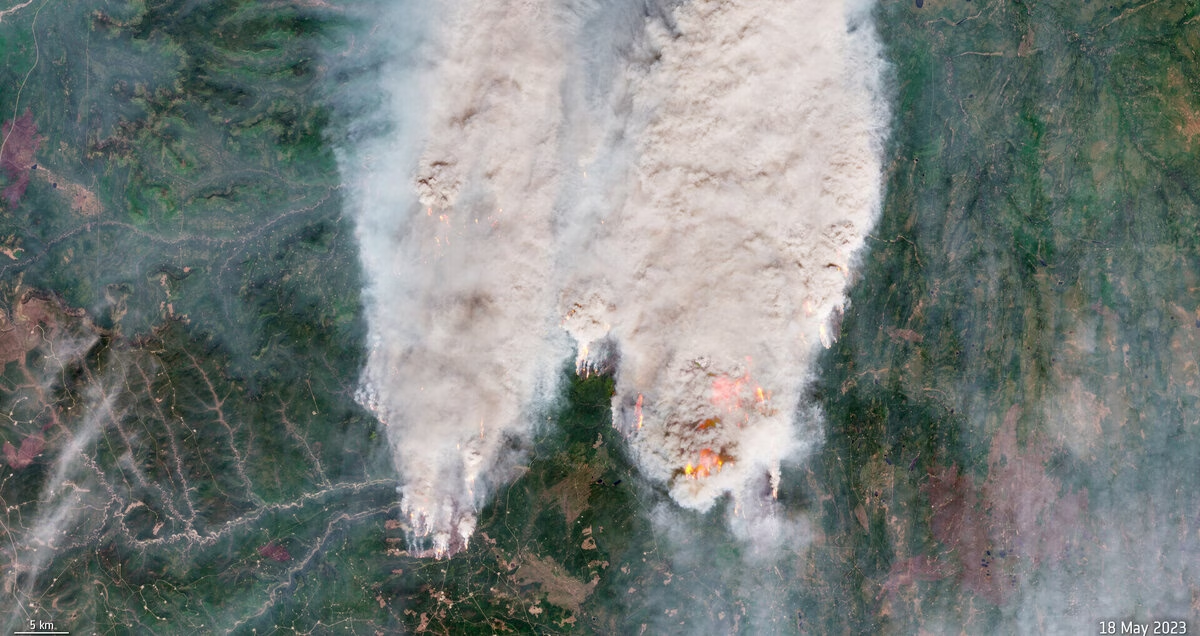A new study supported by the European Space Agency shows that the extreme heat waves causing massive fires and severe droughts in 2023 are also weakening the Earth’s ability to absorb atmospheric carbon. This reduction in carbon absorption has led to new increases in atmospheric carbon dioxide levels, raising concerns about accelerating climate change.
Measurements made at the Mauna Loa Observatory in Hawaii showed that the carbon concentration in the atmosphere increased by 86% in 2023 compared to the previous year, breaking a record since monitoring began in 1958. Despite this dramatic increase, fossil fuel emissions increased by only 0.6%; This suggests that other factors, such as reduced carbon absorption by natural ecosystems, may have caused this increase.
An international team of scientists, supported by ESA’s Science for Society Near Real-Time Carbon Excesses project and the RECCAP-2 Climate Change Initiative project, analyzed global vegetation patterns and satellite data to investigate the underlying causes and deliver an accelerated carbon budget report for 2023. did.
Typically the earth absorbs about one-third of man-made carbon dioxide emissions. However, a published team study National Science Review, It shows that by 2023 this capacity has fallen to just one-fifth of its normal level; This is the lowest level of carbon sequestration on land in two decades.
The graph above shows changes in northern land carbon sinks (blue) and tropical land flow changes (green) from 2015 to 2023. Solid lines represent analysis using dynamic global vegetation models, and dashed lines represent data from the NASA-JPL Orbiting Carbon Observatory-2 mission.
Philippe Siais of the French Laboratory for Climate and Environmental Sciences explained: “Our study shows that 30 percent of this decline is due to extreme heat in 2023, which triggered large-scale wildfires that devastated large areas of Canadian forests and caused severe drought in different parts of the country.” .Amazon rainforest.
“These fires and droughts led to significant vegetation loss, weakening the terrestrial ecosystem’s ability to absorb carbon dioxide. “This situation has been exacerbated by a particularly strong El Niño, which has historically reduced the tropics’ capacity to absorb carbon.”
Widespread fires across Canada and droughts in the Amazon have released roughly as much carbon into the atmosphere as North America’s total fossil fuel emissions in 2023; This underlined the serious impact of climate change on natural ecosystems.
The Amazon, one of the world’s most important carbon sinks, is showing signs of long-term stress, with some regions turning from carbon sinks to net carbon emitters. The researchers suggest that the decline in the ability of Earth’s terrestrial ecosystems to absorb carbon dioxide may indicate that these natural carbon sinks are approaching their limits and are no longer providing the mitigation service they once did by absorbing half of human-caused carbon dioxide emissions.
Discover the latest news in science, technology and space from the more than 100,000 subscribers who rely on Phys.org for daily information. Subscribe to our free newsletter and receive daily or weekly updates on breakthroughs, innovations and important research.
“Achieving safe limits against global warming will therefore require more ambitious emissions reductions than previously thought,” said Philippe Siais.
The study also highlights that current climate models may underestimate the speed and impact of extreme events such as droughts and fires disrupting these important carbon sinks.
Stephen Plummer, ESA’s Earth Observation Program Scientist, said: “It is imperative to understand the direct impacts of climate change on the carbon cycle, and two ESA research projects demonstrate the importance of Earth observation in developing methodologies that will enable rapid assessment of these impacts worldwide.”
Clement Alberghel, ESA’s Deputy Director for Current Climate Information, added: “These results are particularly worrying, especially given the challenges the world faces in limiting warming to 1.5°C as set out in the Paris Agreement.”
Source: Port Altele
